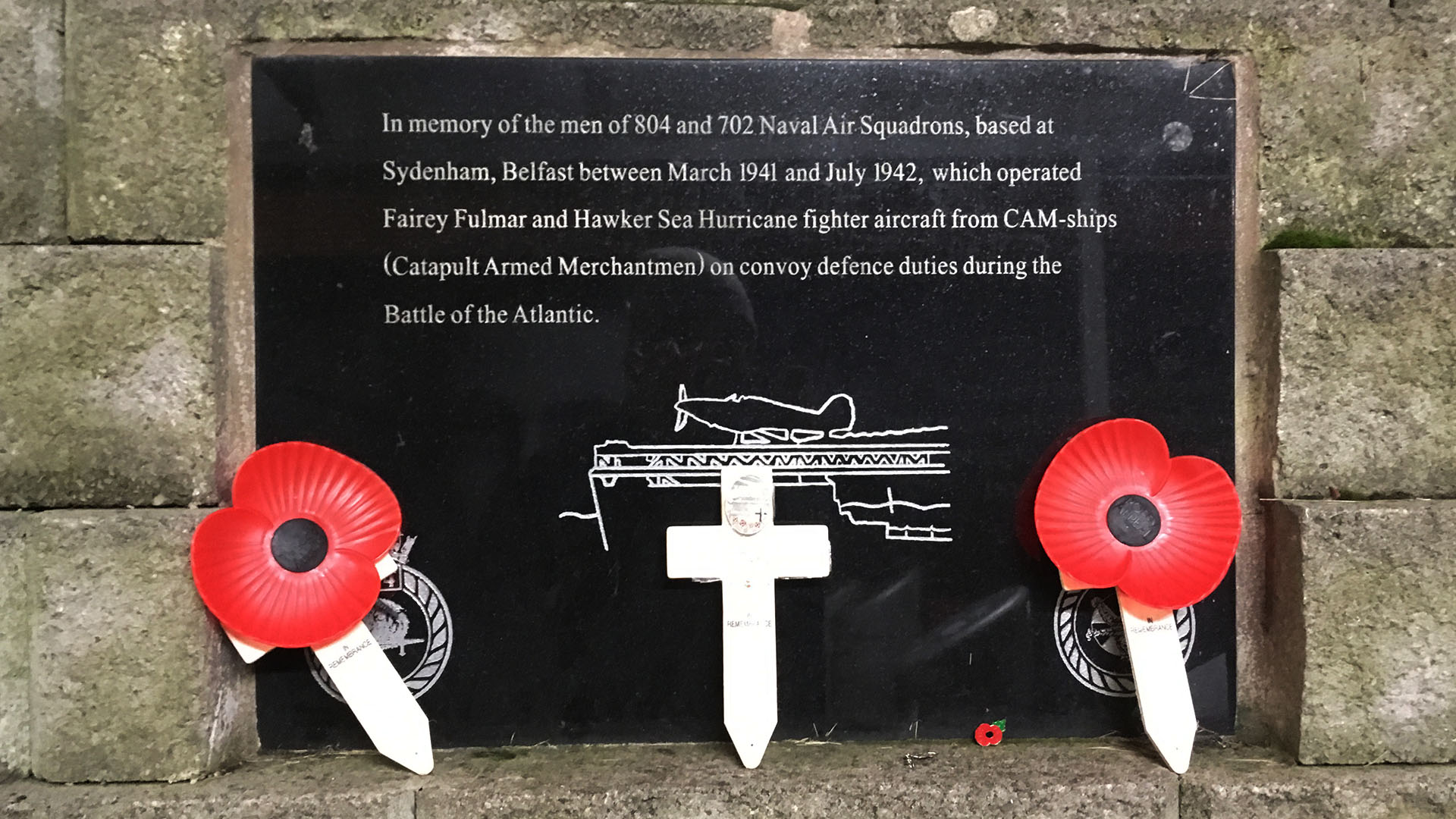You can still fly from Sydenham Airfield, Belfast. Now, of course, it's known as George Best City Airport. The small East Belfast airport has changed identity many times over the years.
Under the Royal Navy, it operated as HMS Gadwall, HMS Gannett III and the Royal Naval Aircraft Yard, Belfast. The Royal Air Force knew it as RAF Sydenham. From here some of the force’s most prestigious flyers operated. Sydenham was, at a time, home to Bomber Command 88 Squadron.
The airfield was first opened by the wife of British Prime Minister Neville Chamberlain. A ceremony on 16th March 1938 revealed the new Belfast Harbour Airport. Built on reclaimed land near the docks, the airfield occupied a prime location near the city. Positioning made it easy to access by road and rail. This was essential to the Royal Air Force and Royal Navy who used the site between 1939 and 1945.
Royal Navy and Royal Air Force in Sydenham
Both the Royal Air Force and the Fleet Air Arm of the Royal Navy trained at the Sydenham site. The Royal Air Force occupied the site from the outbreak of the Second World War in 1939 to 1943. From 21st June 1943, the site became the Royal Naval Aircraft Yard and HMS Gadwall until 30th April 1946. It remained in use by the Royal Navy as HMS Gannet III until 31st May 1959.
RAF Sydenham was home to two squadrons of the Royal Air Force’s famous Bomber Command in 1940 and 1941. RAF 88 Squadron had returned from the Battle of France in their Fairey Battles on 23rd June 1940. As well as Battles, they flew Boston I and Blenheim IV planes and they occupied the seaward perimeter. RAF 88 Squadron remained at RAF Sydenham until 8th July 1941. RAF 226 Squadron was also based on the East Belfast airfield stationed on the inland side of the base. Both squadrons carried out patrols, as far as the Giant’s Causeway and Carlingford Lough. As well as coastal patrols, they took part in training exercises at bombing ranges.
As a Royal Naval Aircraft Yard, the main use was maintenance. Facilities for the embarkation and disembarkation of planes were available. There was also space to store excess equipment. The Navy resided on site or in the nearby Victoria Park to the south-west of the airfield.
Nazi Bombs fall on Belfast
On 5th May 1941, The Fire Raid of the Belfast Blitz devastated the docks area of Belfast. There had already been bombing in the earlier Easter Raid. Around 35 craters caused extensive damage to the airfield and its perimeter putting the site out of action.
Flight Sergeant Alan Bailes observed the destruction of planes and buildings. He remarked on the lack of defence provided by RAF 88 Squadron. Bailes claimed their planes were “obsolete, under-armed and under-powered”. In his opinion, they were no match for the German Heinkel III.
Today, a memorial stone stands near the current airport. You can find it between the car park and the terminal building. On it is an inscription to the memory of the Royal Navy and Royal Air Force who served at Sydenham.
